The search for the perfect rain gear for construction may seem a tad daunting with so many options available out there. Choosing the right clothing for work tends to be an overlooked detail, especially by those who work in construction. All too often, the focus seems to be on the primary tools of the trade, with less thought given to what might protect the worker in adverse climates, while not hampering their mobility. However, given the challenges that weather conditions such as rain presents, having the right rain gear becomes an essential part of a construction worker's toolbox. In this comprehensive guide, we will delve into the importance of proper rain gear, key factors to consider when choosing such equipment, various high-quality options on the market for both waterproof and tear-resistant apparel, and helpful tips for maintaining the durability of your chosen gear.
Importance of Rain Gear for Construction Workers
When we think of a construction site, we often visualize bold, hardworking professionals, donning hard hats and high visibility vests, against a backdrop of dust and noise. They bear witness to the unforgiving weather - be it the relentless scorching sun, biting cold or driving rain. It's on those rainy days when the significance of appropriate rain gear comes into play.
Rain may seem harmless, a mere inconvenience at best. However, for construction professionals, rain can translate into a significantly more challenging work environment. It's not just about feeling uncomfortable while you work; conditions like rain make workspaces more hazardous.
Risks Associated With Working Without Proper Rain Gear
Let's understand why working in construction during the rain without protective gear can be risky:
- Slips, Trips, and Falls - Rain turns the construction site into slippery territory which can easily lead to accidents.
- Hypothermia or Frostbite - Depending on the temperature, continuous exposure to wet and cold environment may lead to severe health conditions.
- Reduced Visibility - Heavy rain can negatively affect visibility, making it difficult for workers to see each other, as well as their tools and equipment.
- Decreased Productivity - Workers can struggle to perform their tasks effectively in the rain, which can lead to extended project timelines and increased costs.
So how do we protect these pivotal champions of construction from the incremental hazards that rain presents? By investing in top-notch rain gear!
Benefits of Appropriate Rain Gear
You may wonder why investing in good quality rain gear is worth it. Here're some compelling reasons:
- It allows workers to maintain comfort and body temperature, keeping them sufficiently dry while they carry out their jobs in the turmoil of rain.
- It ensures safety. Well-designed rain gear provides sufficient grip, preventing slips and falls on wet surfaces.
- It increases visibility, ensuring that each worker can see and be seen clearly. This is particularly important in low light conditions often associated with heavy rain.
- It can significantly boost productivity. When workers are comfortable and safe, they are more likely to perform their duties efficiently.
"Anyone who thinks that sunshine is pure happiness, has never danced in the rain." - Anonymous
This quote seems to encapsulate the spirit of resilient construction workers who brave all kinds of weather. With the right rain gear, they are able to dance in the rain, metaphorically speaking, and carry out their work with relative ease. At the end of the day, ensuring the safety and comfort of construction workers should be a priority for every project, regardless of the weather conditions. After all, safe and happy workers lead to better productivity, successful projects, and a thriving construction industry.
Key Factors to Consider When Choosing Rain Gear
Choosing the right rain gear can be a daunting task. With so many options in the market, you can find yourself in a puddle of confusion, unable to make the best decision. Fear not! It's about finding gear that prioritises function without compromising on comfort and mobility. In this guide, we will delve into key factors like waterproof material, tear-resistant properties, and comfort, which you should consider while buying rain gear.
Waterproof Material
The first thing to consider when looking for rain gear is finding one with a waterproof material. After all, the main reason for buying rain gear is to stay dry! Now, this might seem straightforward, but there are nuances to consider here.
- Different materials have varying levels of water resistance, and hence, differing ability to keep you dry.
- Nylon and polyester are the most common materials used in rain gear due to their waterproof properties.
- Gore-Tex is another popular material, known for its breathability despite being waterproof, thus reducing perspiration.
Choosing a material depends on the conditions you're going to be in. For a lot of outdoor activities or extreme weather, Gore-Tex might be the way to go, whereas, for daily use or light drizzles, nylon or polyester would do just fine.
Tear-Resistant Properties
"Buy cheap, buy twice," they say, and this rings true especially when it comes to rain gear. When out in the rain, the last thing you want to worry about is your gear tearing apart. Buying rain gear with tear-resistant qualities ensures durability.
- Materials like nylon and polyester, while being waterproof, are also tear-resistant.
- Look for gear that mentions 'ripstop' in their description. This means the cloth has a special reinforcing technique making it resistant to tearing and ripping.
Comfort and Mobility
Finally, while the gear's ability to keep you dry is paramount, its comfort and mobility are equally crucial.
- Look for rain gear with an adjustable fit to ensure comfort and flexibility.
- Gear that is too tight might hinder your movements, whereas gear that is too loose might let water seep in.
Remember, the best rain gear is one that not only keeps the rain out but also makes you feel comfortable while navigating through the rain. So next time you're in the market for rain gear, keep these factors in mind. After all, being well prepared can brighten even the rainiest of days.
Types of Waterproof Rain Gear
Preparation is key when you're planning an outdoor adventure. After all, nature is unpredictable and it's crucial to have protective gear against unforgiving weather conditions. The last thing you want is getting wet and cold in the middle of nowhere - and that's where waterproof rain gear enters the scene. The right choice will not only keep you dry but also enhance your outdoor experience, regardless of the weather. This section covers the three main types of waterproof rain gear you may consider packing: rain jackets, rain pants, and rain suits.
Rain Jackets
A rain jacket is your first line of defense. It's ideal for light rainfall and regular outdoor activities, thanks to its practicality and versatility. Modern designs are lightweight, breathable, and even stylish, which means you won't be sacrificing comfort for function. Here's what to look for:
- Waterproof Rating: This determines how resilient the jacket is against heavy rain. The higher the rating, the more waterproof the jacket.
- Breathability: Look for a jacket that allows sweat to escape. It prevents you from getting soaked in your own perspiration.
- Durability: You'll want a jacket made from sturdy materials. It should withstand the elements without tearing or absorbing water.
Rain Pants
Consider investing in quality rain pants if you'll be participating in activities where you might get wet, such as biking or kayaking. They not only offer excellent protection but also provide extra warmth in cold, wet conditions. Consider these factors when choosing:
- Material: A common choice is Nylon because it's waterproof, lightweight, and affordable.
- Size: Rain pants should be roomy enough to accommodate layers underneath, but not too baggy to restrict movement.
- Easy-to-Use Zippers: Zippers that run down the legs allow you to put on or remove the pants without taking off your boots.
Rain Suits
For the ultimate rain protection, consider a rain suit. It's a combination of a rain jacket and rain pants, offering head-to-toe coverage. As such, they are ideal for torrential downpours and water-intensive activities. Ask yourself these questions:
- Do I Need Head Coverage? Some suits come with attached hoods, some don't. Choose based on your needs.
- Is it Windproof? In windy conditions, a windproof suit will add another layer of protection.
- How Compact is the Suit? If you’re hiking or packing light, choose a suit that folds into a compact size for easy storage.
In the end, the type of waterproof rain gear you choose significantly depends on the nature of your outdoor activities and the degree of protection needed. Consider your needs and remember, even the biggest downpour can't wash away the thrill of adventure if you're well-prepared.
Types of Tear-Resistant Rain Gear
When it comes to battling the elements, tear-resistant rain gear has made a significant difference in our protection against harsh weather conditions, particularly beating rains. If you find yourself outdoors frequently during unstable weather, ensuring that your attire can stand up to the test is vital. From reinforced jackets to sturdy pants, and even tear-resistant overalls, there's something for everyone seeking to keep dry and shielded from the wet onslaught.
Reinforced Jackets
These jackets are arguably the most critical rain gear that comes to mind when faced with the prospect of a rainy day. With their distinct qualities such as improved material durability, reinforced seams, and upgraded zippers, they provide a fortress of protection against the elements.
Key features are:
- Enhanced Durability: They are usually crafted from hardy materials such as Denier Nylon or Ripstop, known for being sturdy and tear-resistant.
- Innovative Seams: Reinforced rain jackets often feature taped seams for added protection against leaks.
- High-quality Zippers: Heavy-duty zippers can withstand prolonged exposure to adverse weather without corrosion or failure.
Despite its robust build, reinforced jackets still offer unsurpassed comfort with breathable fabric and liners.
Reinforced Pants
Much like reinforced jackets, these pants are designed with the same intention: to shield the wearer from ruthless rainy weather. Equally, they offer features that stand out to ensure they are not just useful but also convenient.
Significant aspects include:
- Abrasion-resistant material: Usually made with tough and durable material that could stand against rough use.
- Expanded Pockets: Designed with ample pocket space, keeping your hands free and your belongings safe.
- Adjustable Fit: Offering an adjustable fit around the waist, they ensure a perfect fit and superior comfort.
Reinforced pants provide the perfect combination of protection and comfort, helping you navigate the rainy condition with absolute confidence.
Tear-Resistant Overalls
If heavy rainfalls are common where you live or work, tear-resistant overalls are the ultimate protective gear. They cover most parts of the body, providing complete protection. As a bonus, they are also very high on comfort and style quotient.
Key characteristics are:
- Extended Protection: By covering torso and legs, these overalls provide extended protection compared to just jackets or pants.
- Versatility: With styles ranging from bib-type to full cover, overalls offer options for varied requirements and preferences.
- Convenience Features: Inbuilt belt or suspenders, multiple pockets, and easy-on-easy-off design make these overalls highly convenient for everyday use.
Investing in high-quality, tear-resistant rain gear is invaluable when going up against the elements. So, never underestimate the comfort and protection that these various types of rainwear can offer—an absolute must in arduous weather conditions.
Popular Brands and Recommended Products
Diving into the world of technology can be perplexing, especially with so many brands out there offering different types of products. To help make things easier, we have convened a list of established, trustworthy brands that offer superior-quality, innovative, and cost-effective products.
First, there is Apple. Known for its ground-breaking iPhone, Mac, and Apple Watch, the tech giant has been revolutionizing the tech industry since its inception. Notably, Apple's products are praised for their user-friendly interface, top-notch security, and impressive design.
Next up is Samsung, a brand that needs no introduction. From Smart TVs to smartphones and from refrigerators to washing machines, Samsung's prowess in producing technology-rich gadgets is truly second to none.
Another popular brand to remember is Microsoft. The brand's capabilities span across software development, game consoles, PC accessories, and much more. Noted for its Windows operating system and MS Office Suite, Microsoft's reputation for delivering reliable tech solutions remains unrivaled.
Lastly, we can't forget about Sony. The brand excels in offering high-quality electronics and entertainment products, including televisions, cameras, audio equipment, and the well-loved PlayStation gaming console.
Recommendations for standout products from these brands are as follows:
- Apple: iPhone 12 Pro - With its 5G capabilities, A14 Bionic chip, and Pro camera system, it's arguably one of the best smartphones available in the market.
- Samsung: Samsung Galaxy S21 - Another 5G smartphone with superb features including an intelligent battery, powerful processor, and high-resolution camera.
- Microsoft: Surface Pro 7 - The 2-in-1 laptop tablet hybrid is an impressive device boasting of power, ultra-lightness, and adaptability.
- Sony: Sony WH-1000XM4 - Among the best wireless noise-cancelling headphones, with features such as adaptive sound control, proximate touch control, and voice assistant capability.
"Technology is nothing. What's important is that you have faith in people, that they're basically good and smart, and if you give them tools, they'll do wonderful things with them." - Steve Jobs
This quote from Apple's co-founder serves as a reminder that, although brands and products are important, what truly matters is how you, as a user, leverage these tools to enrich your life or the lives of others. The brands mentioned above have certainly given us some truly wonderful 'tools'. Now, it's up to us to do wonderful things with them.
Tips for Caring and Maintenance of Rain Gear
Rain gear, a staple in most wardrobes, acts as your shield against nasty weather. However, like any other piece of clothing, rainwear also demands proper care to stay efficient and last longer. This essential care includes employing accurate cleaning methods, ensuring correct storage, and practicing adequate drying techniques.
Proper Cleaning Methods
It's a popular misconception that rain gear doesn't need cleaning since it's exposed to water regularly. Interestingly, cleaning plays a significant role in maintaining its water repellency feature. But remember, each material is unique and requires a different cleaning approach. Here are a few tips that apply to most rain gear materials:
- Always follow the manufacturer's washing instructions. It ensures the longevity and durability of the material.
- Avoid using harsh detergents or bleach as it can damage the weatherproofing coatings.
- Opt for a mild detergent or a cleaner specifically designed for technical outerwear.
- Machine wash is usually fine for most rain gear but use the gentle cycle and cold water.
- Do not dry clean unless recommended by the manufacturer, as it can degrade the waterproof materials.
Cleaning your rain gear correctly can effectively enhance its lifespan and keep you dry during stormy weather.
Storage and Drying Tips
Storage and drying are another two critical areas that often get overlooked in rain gear care. It is essential to remember to never store your rainwear while it's still damp. This practice can encourage mildew growth, which can compromise the waterproofness of your gear. Here are some useful tips:
- Make sure to thoroughly dry your rain gear before storing it. Air drying is better as it prevents possible heat damage from dryers.
- Store the gear loosely folded or hung up in a cool and dry area away from direct sunlight. Avoid cramped spaces.
- Every once in a while, dust off your stored gear to prevent any dust accumulation as it can clog the material's pores leading to reduced breathability.
By following these care and maintenance tips, your rain gear can stand up to any downpour and continue to shield you reliably against unexpected rains. Remember, proper care and maintenance can extend the life and effectiveness of your rain gear significantly. So next time before you stow away your wet rain gear in a corner, think about these tips and give it the care it deserves.
Conclusion
As we wrap up, it's vital to emphasize the importance of choosing the right rain gear for construction, where a waterproof and tear-resistant ensemble plays a big role. More than just a piece of clothing, the right rain gear can offer ingenious details like 3M reflective striping for enhanced visibility, ensuring your safety while working in hazardous environments.
Remember, comfort and mobility shouldn't be compromised. Choose brands, such as Hurricane Raingear, that understand these needs and deliver accordingly. They handcraft 100% waterproof and rip-resistant rain gear, providing the winning combination of comfort, safety, and durability that all construction workers require.
Lastly, proper care and maintenance of your rain gear will see it serve you longer, protecting you, come rain or shine.
To find out more about the best gear options available, visit us at Hurricane Raingear. You can trust their products to guarantee your satisfaction, being assembled in Canada using 100% North-American-Made materials. Providing fully tracked shipments and dedicated support 7 days a week, they're committed to providing all-round services to their customers.
Let's face it, the weather won't always be friendly, but with the right rain gear, you can stay productive and safe regardless of the conditions out there. Choose wisely, choose quality — choose Hurricane Raingear. Stay safe, stay dry!
Frequently Asked Questions
-
What are some waterproof materials used in rain gear for construction?
Some waterproof materials used in rain gear for construction include PVC, Gore-Tex, nylon, and polyester with waterproof coatings.
-
Is tear-resistance important in rain gear for construction workers?
Yes, tear-resistance is crucial in rain gear for construction workers as it ensures durability and protection from sharp objects or rough surfaces.
-
Are there any lightweight options available in rain gear for construction?
Yes, there are lightweight options available in rain gear for construction that provide comfort and ease of movement without compromising on water resistance and tear-resistance.
-
How do I choose the right size for rain gear?
When choosing the right size for rain gear, refer to the manufacturer's sizing chart and consider wearing layers underneath to accommodate for varying weather conditions and personal preferences.
-
What are some additional features to look for in rain gear for construction?
Some additional features to look for in rain gear for construction include adjustable cuffs and hems, multiple pockets for storage, reinforced knees and elbows, and reflective strips for enhanced visibility.



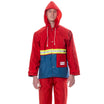
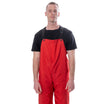
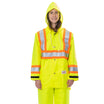
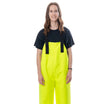
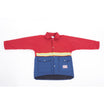
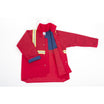

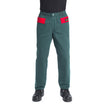
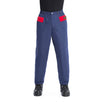
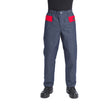
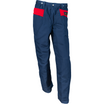
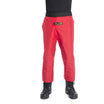
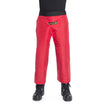
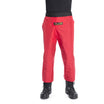
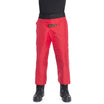

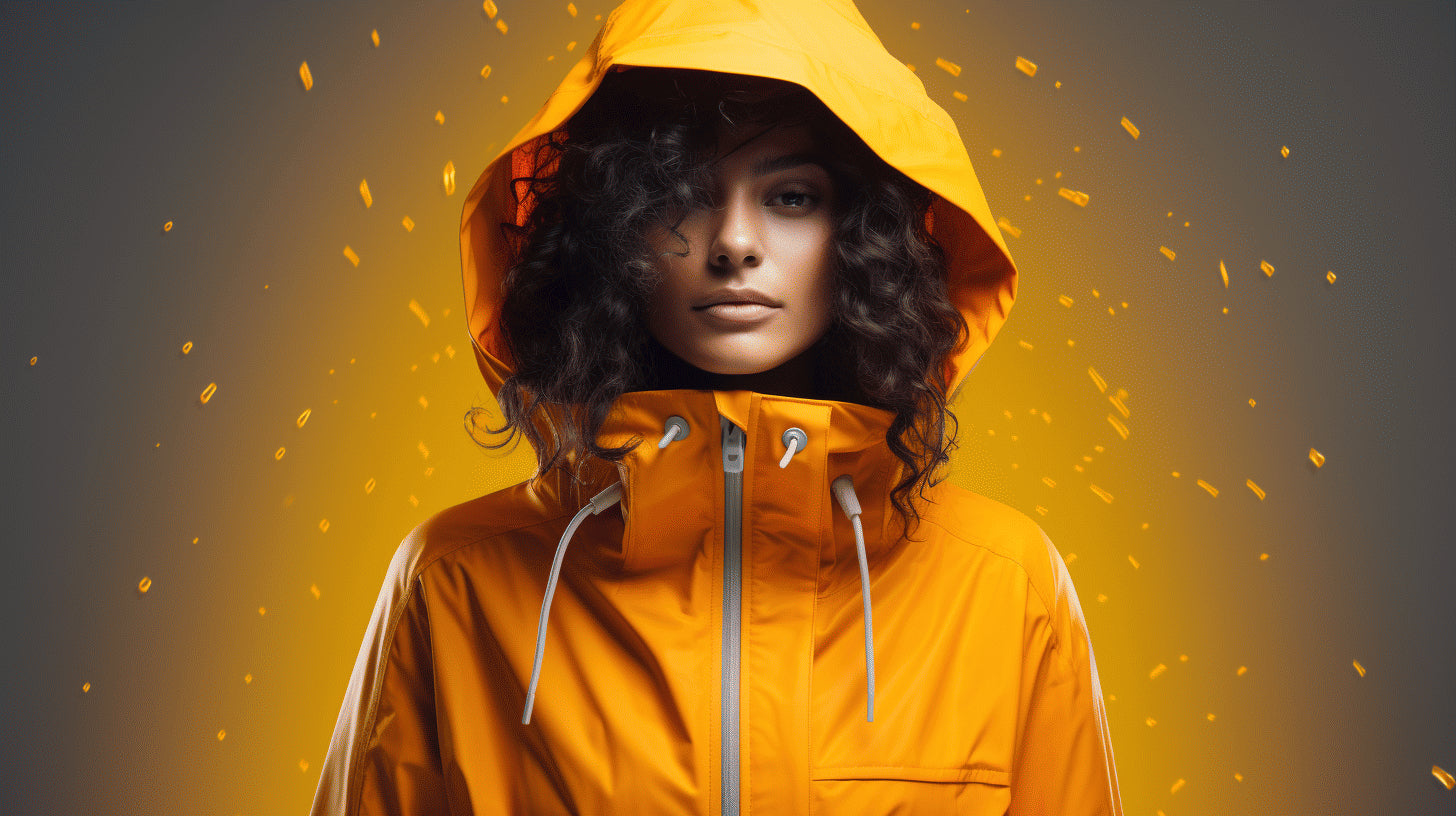

Leave a comment
This site is protected by hCaptcha and the hCaptcha Privacy Policy and Terms of Service apply.